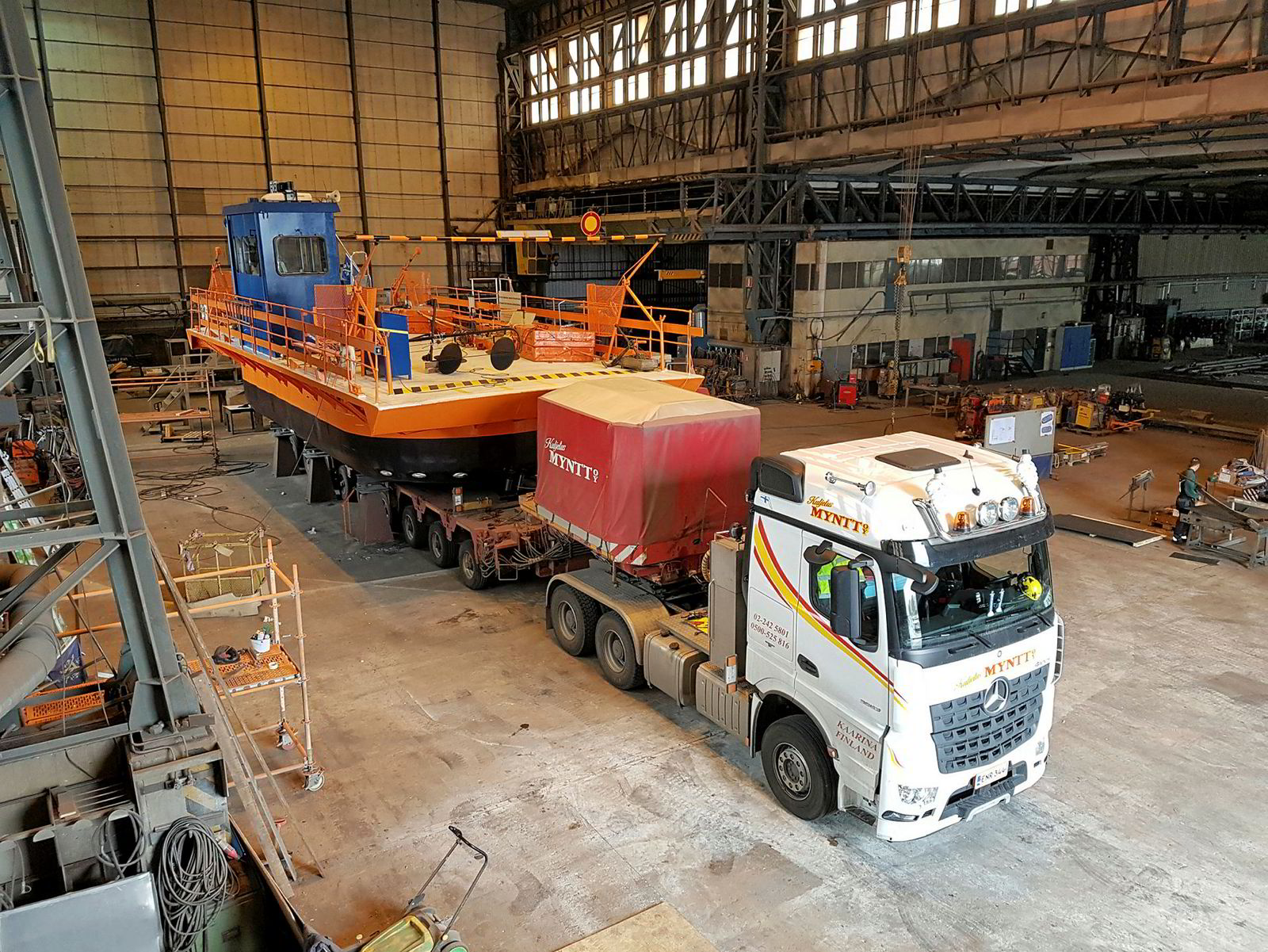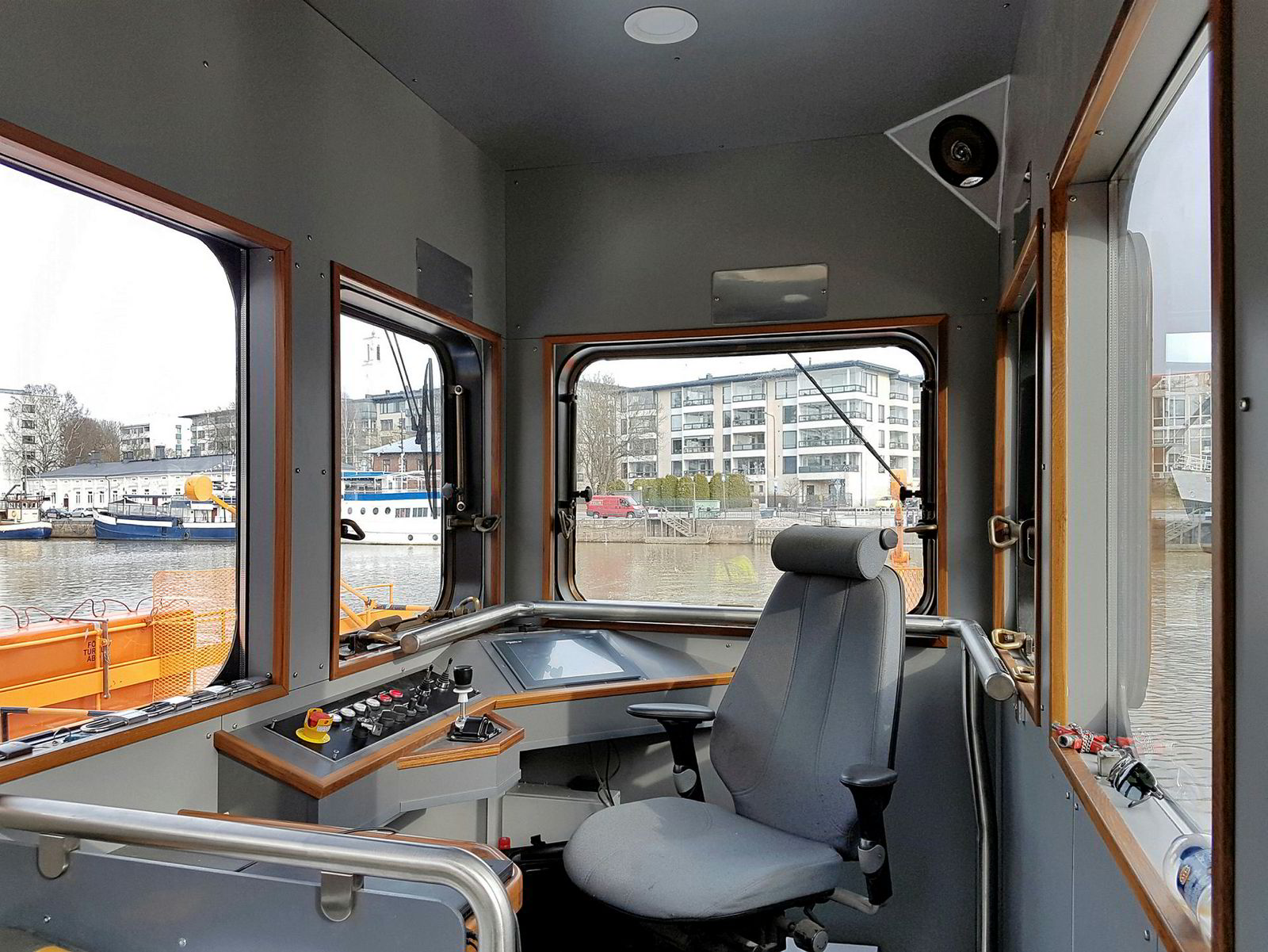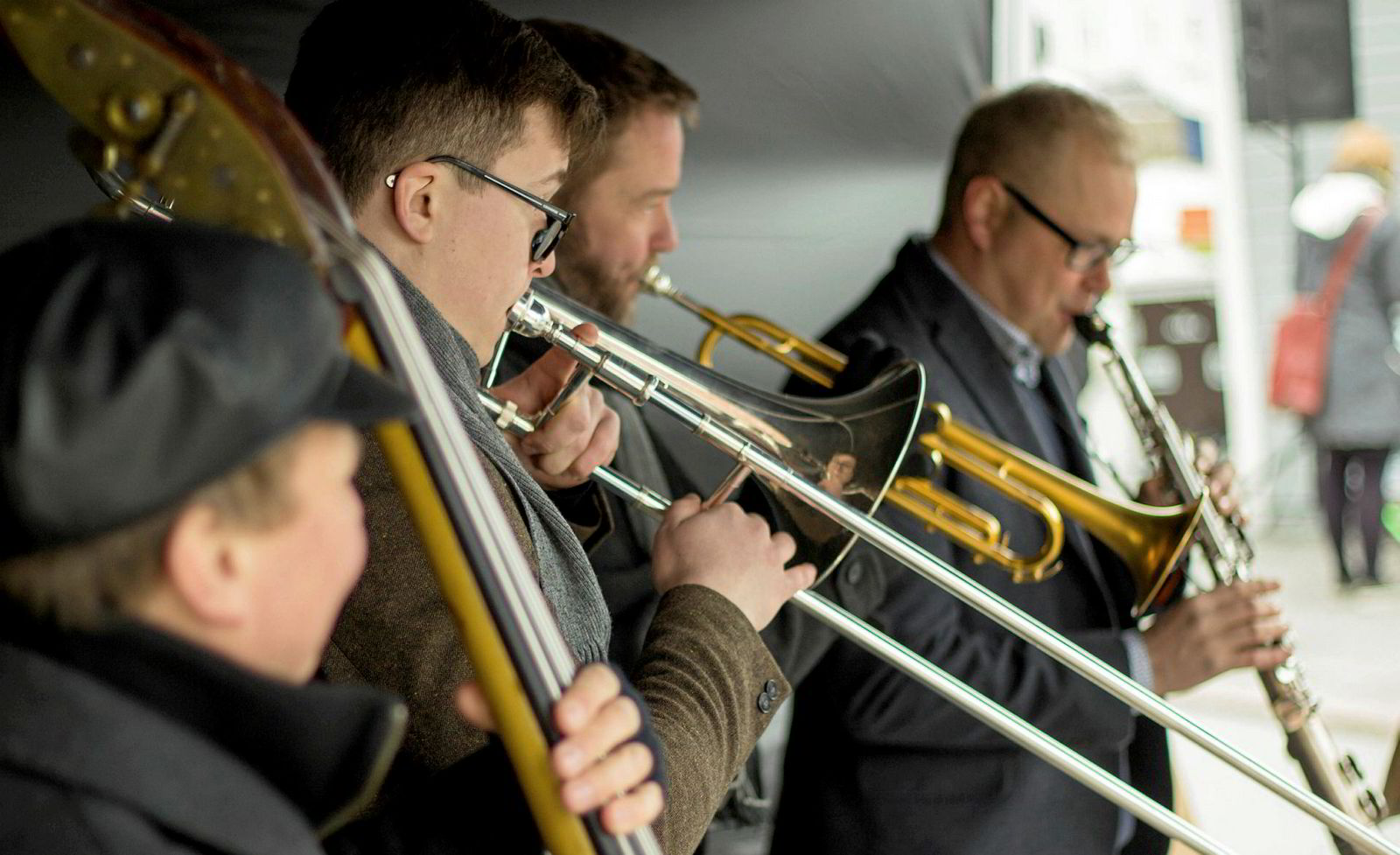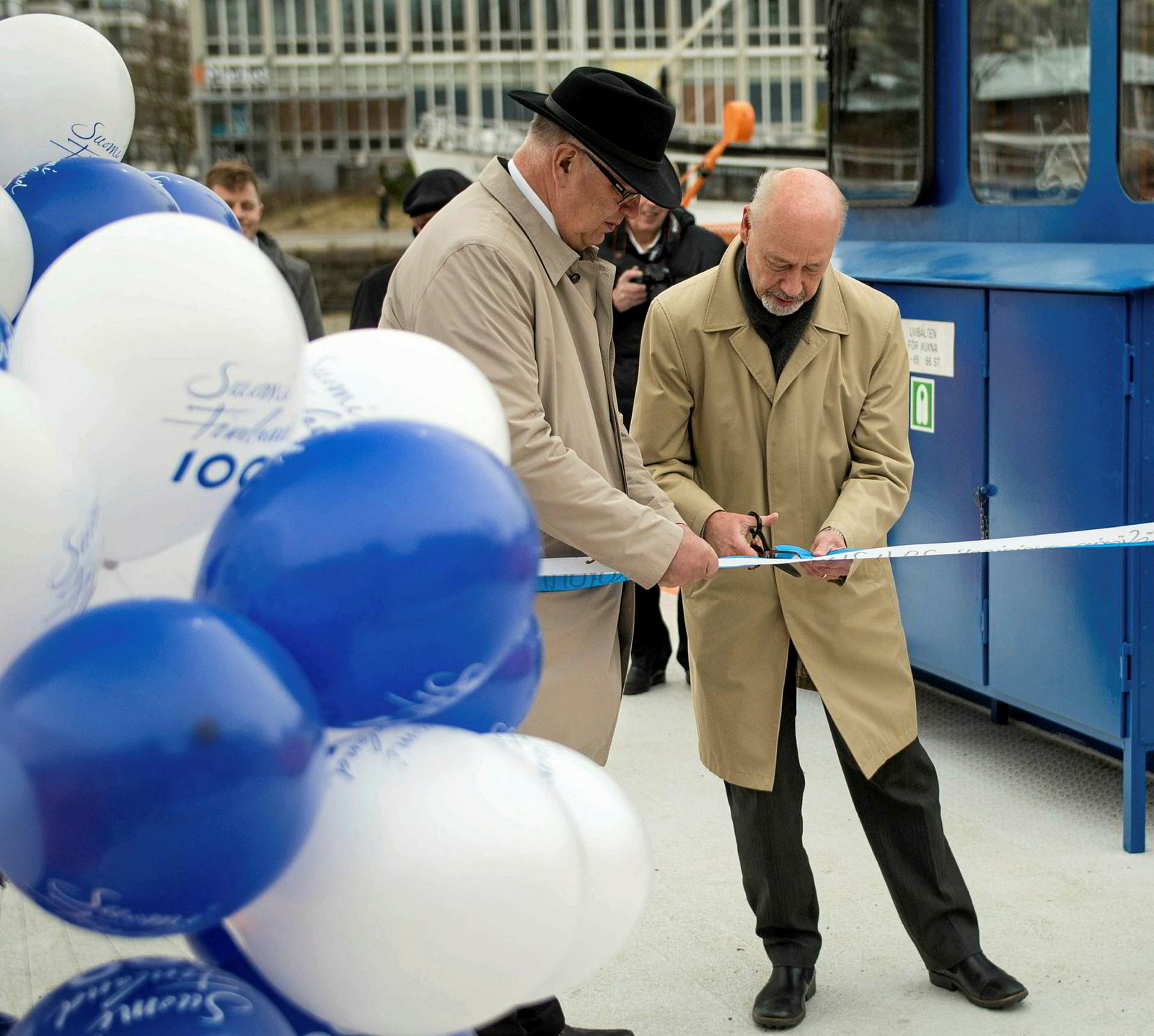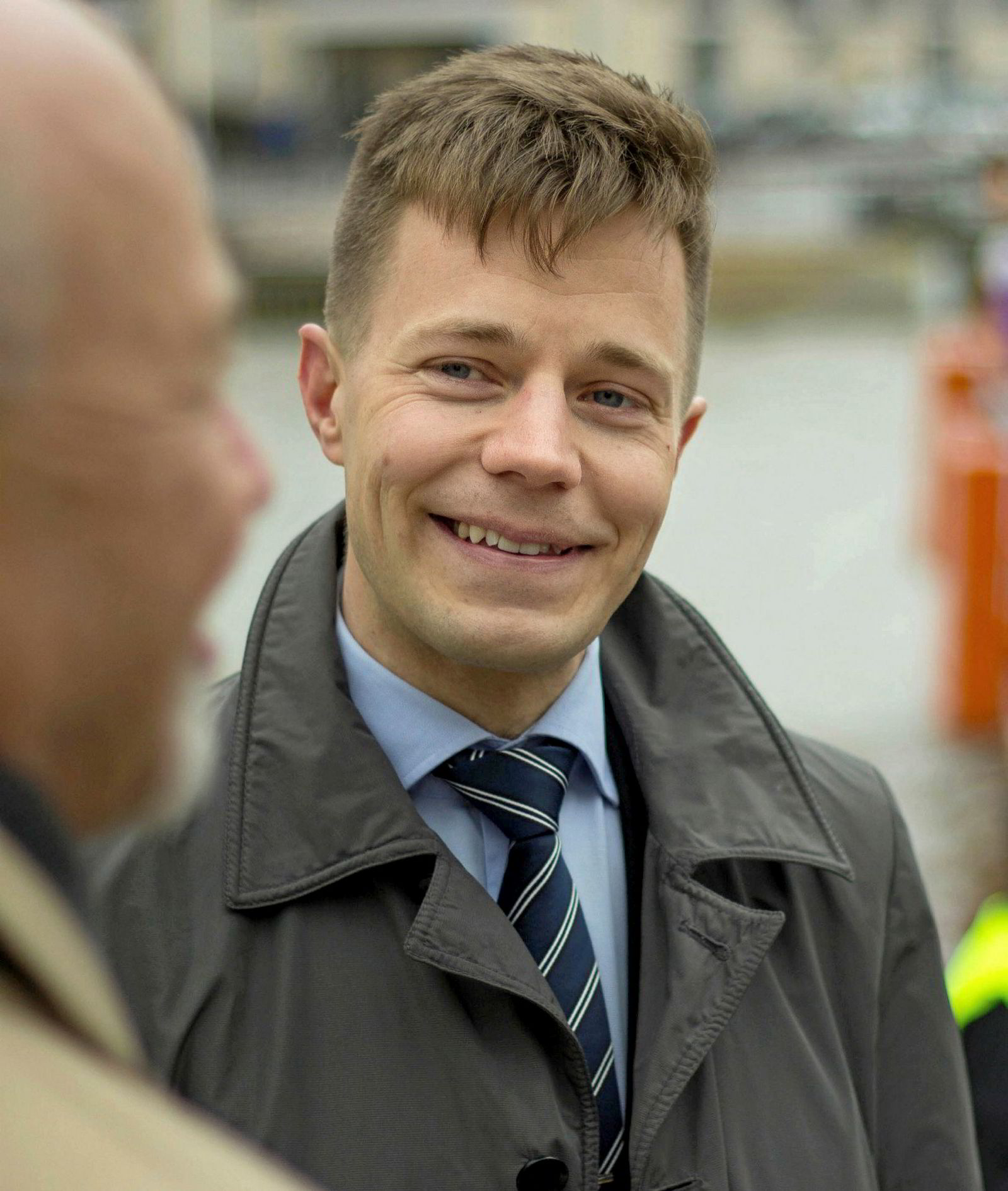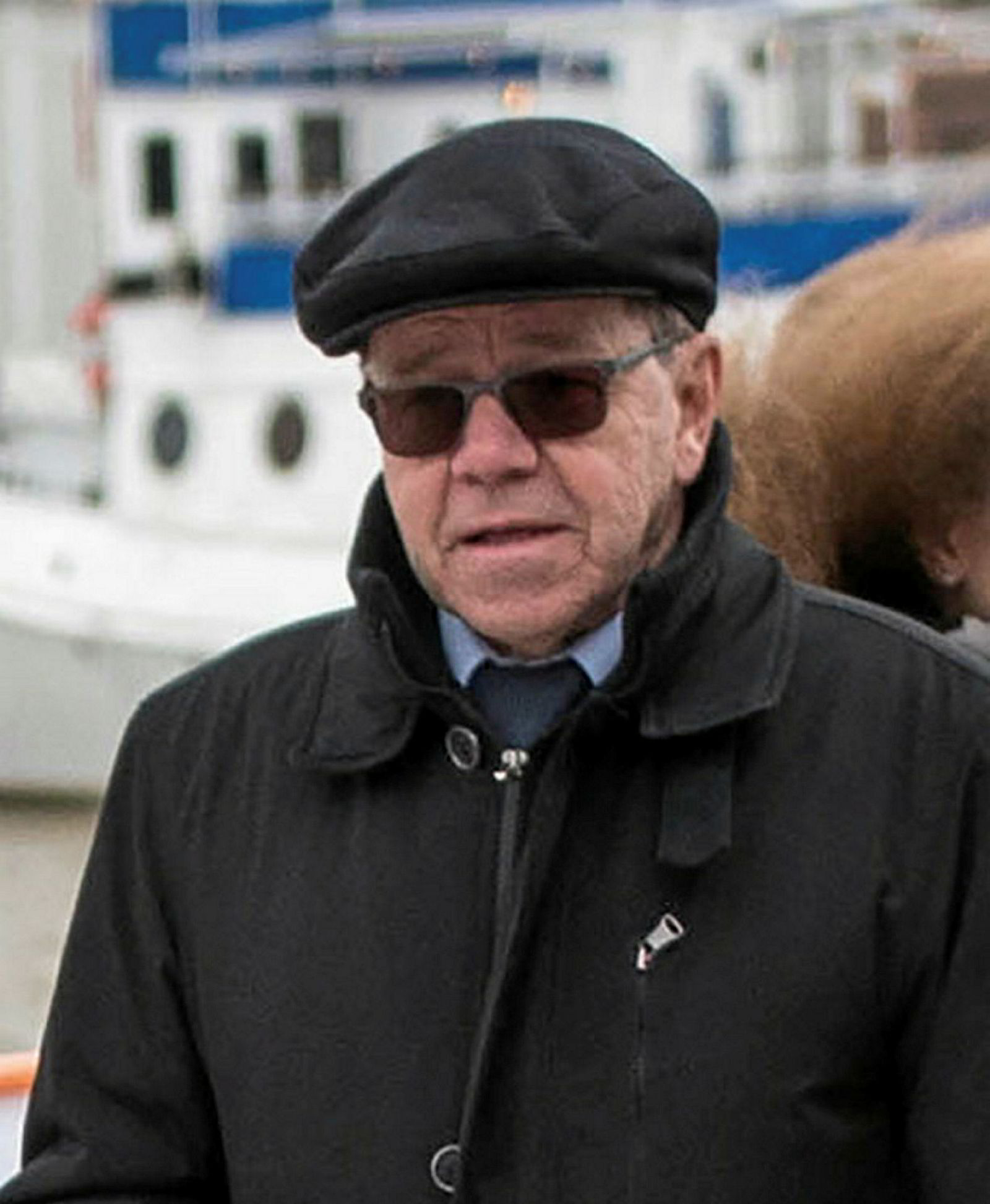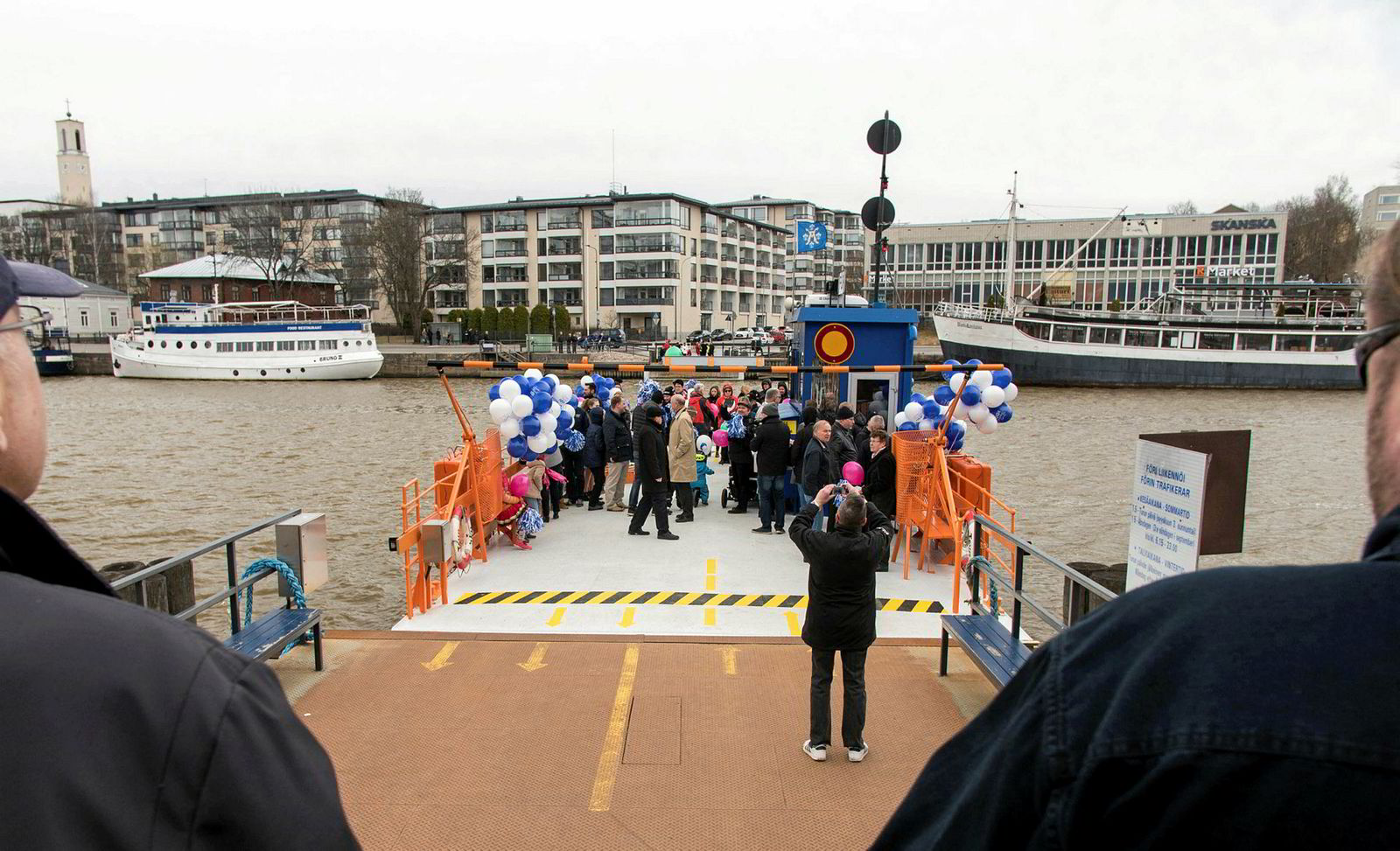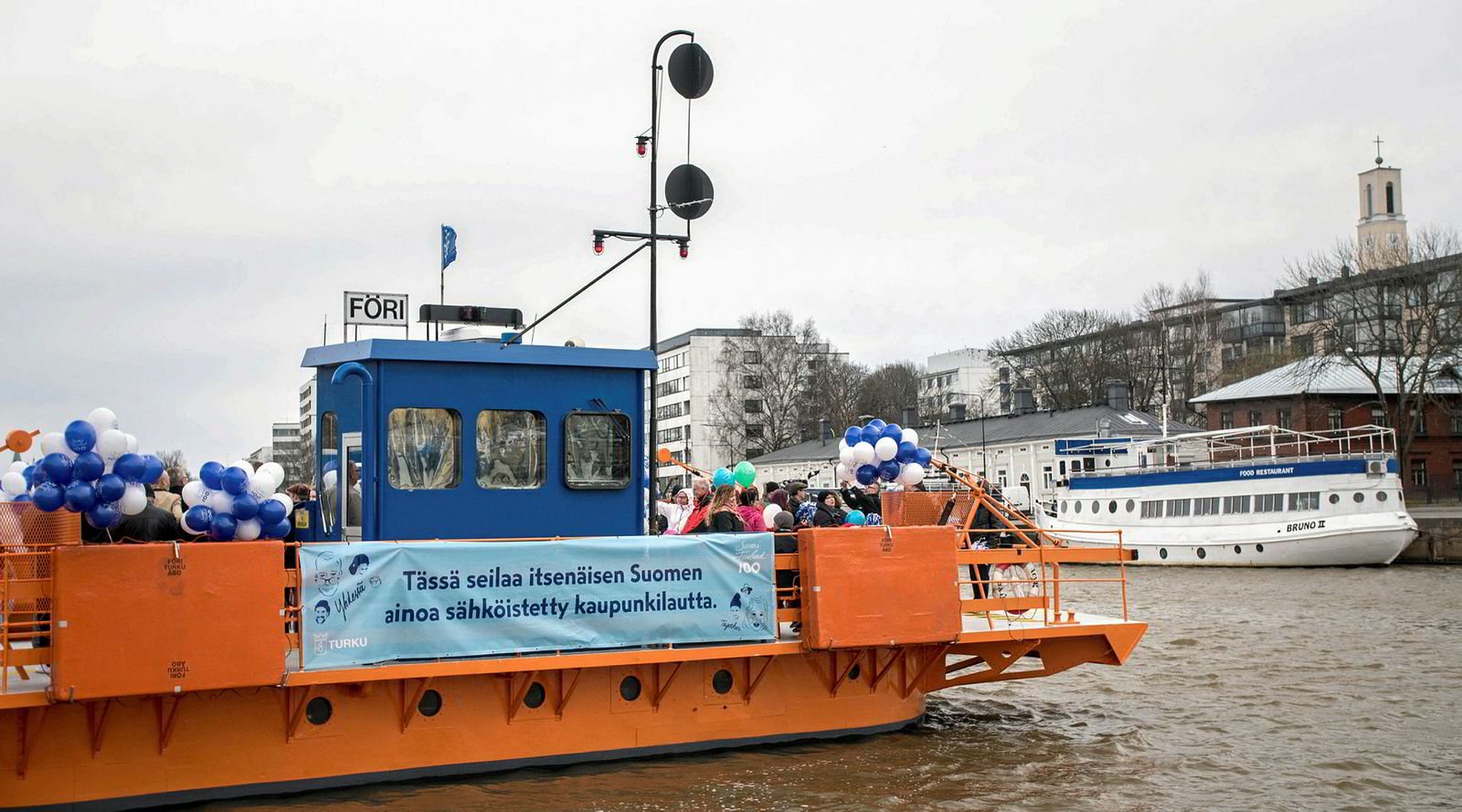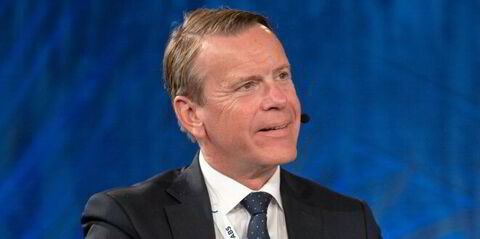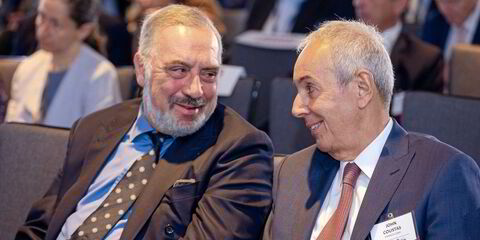The stalwart little ferry Fori has been carrying foot passengers across the River Aura in Turku, Finland, since 1904.
An iconic part of the city’s transport infrastructure, something had to be done about its polluting diesel engines.
So the city authorities went to local boatyard Mobimar to upgrade the Fori into a zero-emissions ferry fit for the 21st century.
It is now back in the water after a year-long upgrade. City board chairman Olli A Manni cut the ribbon at its official relaunch alongside project stakeholders and members of the public.
The electric drivetrain featuring permanent-magnet motors were supplied by specialist Visedo to give greater efficiency, high redundancy, as well as reduced noise and operating costs. Its lithium-ion batteries are charged overnight and the system is also much lighter.
“There was no off-the-shelf solution,” said Mobimar project manager Antti Immonen of its collaboration with Visedo. “We needed a partner that could be flexible and responsive to our needs.”
Whereas larger vessels can accommodate AC electric systems, smaller vessels do not have the required space.
As such, they collectively pose a far bigger emissions challenge, Visedo says.
Visedo's innovation is a compact system that converts DC power into AC current for propulsion, allowing small vessels to benefit from the emissions reduction and fuel savings of AC systems. It installed a package on the passengership Ferry Happiness in Kaohsiung, Taiwan, which went into operation earlier this year as Asia’s first hybrid electric ferry.
Immonen says the biggest challenge was the rudimentary nature of the original Fori drawings from 1903. "We had to first measure everything from the vessel and then create a 3D-model as a basis for the new structure," he told TradeWinds.
But putting "Usain Bolt's organs inside the body of Santa Claus" was a lot of fun, as he describes installing the new motors and batteries inside the 114-year-old engine room.
He says because the technology is so new, there were no clear classification rules. "We were actually creating the precedent in co-operation with our flag-state authorities at the Finnish Transport Agency," he said.
"The platform/hull itself was built 45 years before the IMO [International Maritime Organization] was established. We always had to keep in mind that we'd been contracted only to modernise the Fori, not to redesign it entirely to satisfy all the maritime legislation that newbuildings have to fulfil in 2017."
Immonen says the main learning from the project was understanding Visedo’s forerunner components and the Corvus battery technology. "We had to design the system automation for charging batteries, steering the vessel and for remote fault diagnosis," he said.
Visedo and Mobimar are also project partners working on Denmark’s “E-ferry”, which is expected to go into service on the route from the island of Aeroe to Fynshavn on the mainland in November. Visedo is supplying the electric propulsion system and Mobimar the battery-charging arm for the 130-car ropax, which is being funded by the European Union’s Horizon 20/20 scheme.
Visedo project manager Heikki Sallinen was coy about what is next after the Fori. “We’re working on a lot of interesting projects,” he told TradeWinds.


